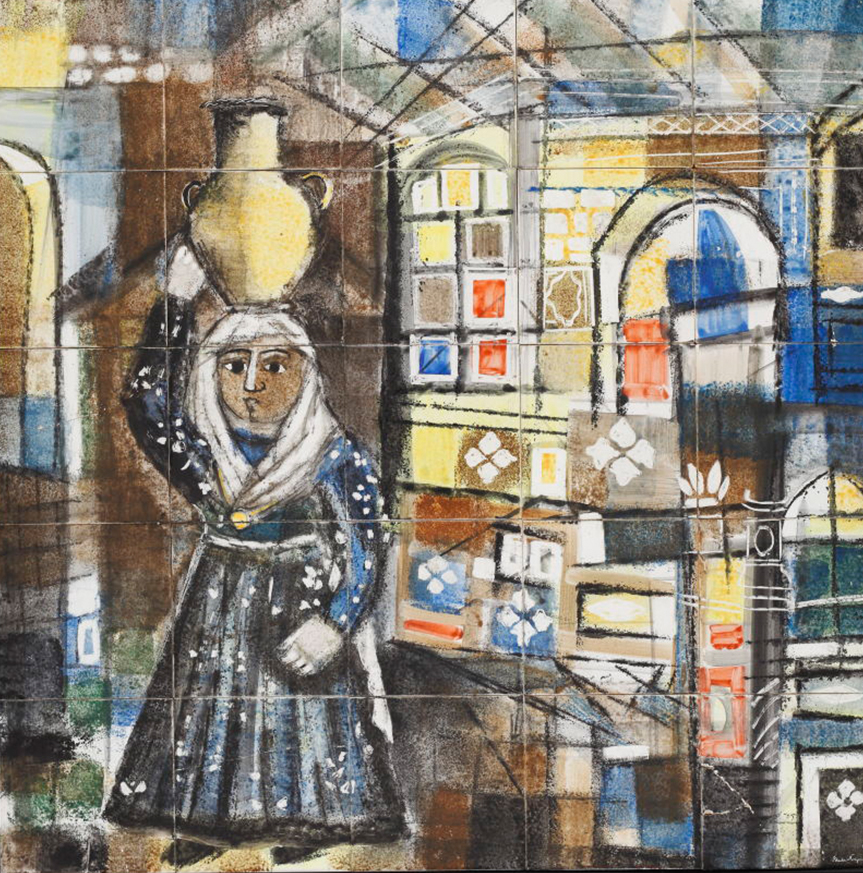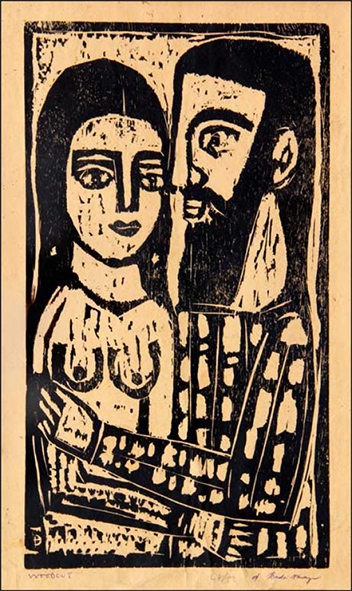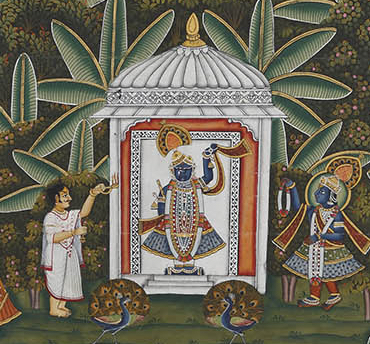Like a virtuoso who can coax a tune out of any instrument, Badri Narayan could tell a story through practically any medium. Apart from his prodigious body of work on canvas, he’s also painted on ceramics and glass; created woodcuts and engravings; authored essays and an academic paper; taught workshops and held storytelling sessions for at-risk and differently abled children; and made graphics and artwork for film. In a career of over six decades, the master applied himself to many artistic pursuits—all with the open-mindedness of a rookie and the enthusiasm of a child.
Ceramics & mosaics

Untitled tile painting by Badri Narayan from the Sarmaya collection
In the early years, Badri worked at Studio Vitrum in Mumbai, where he painted on tiles and plates and created mosaics. Experts believe it is during this period that his figurative, two-dimensional style began to crystallise. In 1969, his ceramic tile mural and mosaic-on-glass panels were displayed at a pavilion in the Gandhi Darshan complex in Delhi.
Writing & film
Woodcuts & engravings

Image of ‘Woodcut by Badri Narayan’ from Artworldindia.com
In an interview with ‘The Illustrated Weekly of India’, Badri explained his partiality to ‘achromatic colours’ like black and white and to working with woodcuts, which also draw from a neutral palette. He said he found it liberated his work from “…the elements that creep into a composition by their very association [with]…the chromatic range of colours. For example, a round red patch can be mistaken for a tomato, a green area for a plot of grassland.” He experimented and created a distinctive language with printmaking techniques, like linocuts, engravings and woodcuts, before finding his niche with watercolours.
Teaching
In the same interview, Badri said: “Artistic activity has this significance for me: it is a bridge to heaven — an aspiration to better living.” He wanted everyone, and especially children, to have access to this heaven. Badri had no formal training in art and came from a family of modest means. This made him empathetic to kids who generally got a raw deal in society. He taught painting and held storytelling sessions at remand homes for young people marked as ‘juvenile delinquents’ and at schools for children with disabilities. A great believer in the transformative powers of art, Badri was generous with both his time and his talent.



